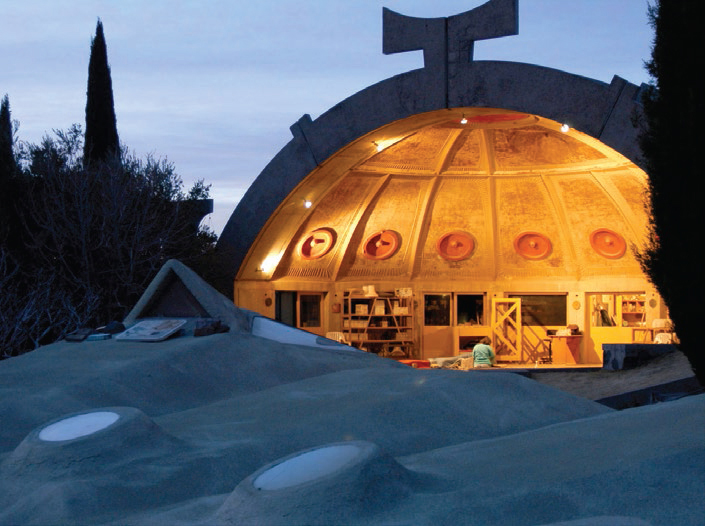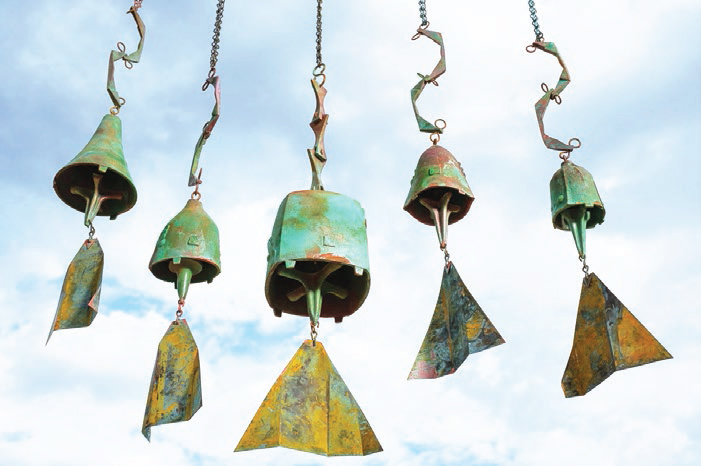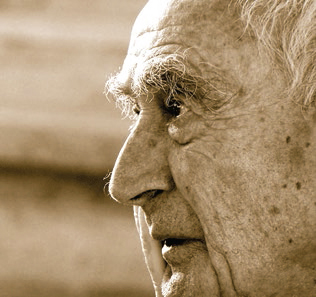Bells of Wonder
 |
|
|
Bells were not top of mind for architect and ceramicist Paolo Soleri in 1955 as he was developing a philosophy of living and building that he hoped would replace urban sprawl with human-centered mega-cities.
Indeed, when a crafts dealer suggested that Soleri create Korean-style ceramic bells, Soleri's reaction was, "Well, I don't know what you are talking about."
"The last thing that came into my mind was to make wind bells. I didn't know they existed, in a sense," he told editor John Stroheimer for the 2001 book The Urban Ideal: Conversations with Paolo Soleri. "I started doodling with this notion of bells, and I accepted. I started to make bells."
Soleri (1919-2013) may best be known today among visionaries as the inventor of 'arcology,' or 'ecological architecture.' But among the general public, especially those with a fondness for the organic side of modernism, it's the bells that ring out loudest in Soleri's legacy.
 |
|
|
Bells in ceramic and bronze, often arrayed as mobiles, remain a big business for Cosanti Originals, a for-profit Arizona company based in Paradise Valley that provides financial support for the non-profit Cosanti Foundation.
Organic design can be seen in the shapes of the bells, which were designed by Soleri, and in their at-times intricate incised designs. They often suggest indigenous cultures and nature, and can seem otherworldly.
It's worth noting that Joe Eichler's architects, particularly Anshen and Allen, saw themselves as part of this organic tradition started by Frank Lloyd Wright.
Soleri learned a lot about organic architecture during a short stay in the mid-1940s at Wright's Taliesen West in Scottsdale, Arizona, an architectural community and live-in school, and he learned that he could adapt its organizational model, which was based on apprentices working for a revered master.
 |
|
|
But if Wright was Soleri's inspiration, he was also a bit of his nemesis.
Wright promoted a form of urbanization—Broadacre City—with homes and businesses spread through the landscape. Wright's concept sat at a 180-degree remove from Soleri's idea of housing people in dense, often single-structure mega-cities.
One of Soleri's designs, the floating city of Novanoah, would have accommodated 400,000 people on 60 acres, with mushroom-like towers rising from a trio of mounds.
Soleri, who studied architecture in his hometown of Turin, Italy, moved to the United States in 1946 to study with Wright. In 1950 he designed a ceramics factory in Italy, one of the few of his designs that was built.
Ceramics became central to Soleri's work after that—and not just pots and bells. The structures of his two Arizona projects, Arcosanti and Cosanti, like the bells, are formed from molds. At Cosanti, which Soleri and his wife founded in 1955 as his studio, production site, and as their home, Cosanti Originals still operates today.
 |
Throughout his building, Soleri focused on ecological principles, arraying rooms with an eye to passive solar design, recycling, and water conservation.
Earth Day was new in 1970 when Soleri created Arcosanti, a community of young architects and artists in the high Arizona desert, 70 miles north of Phoenix, inspired by the structure of Taliesen.
It became the only arcology that was ever actually constructed, and debuted just as Soleri's 1969 book, Arcology: City in the Image of Man, was making him a star in the counter-culture of the day, with its interest in ecology, communal living, and utopian dreams.




